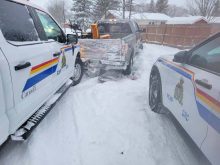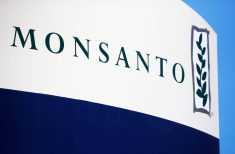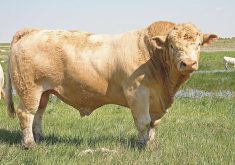With the February 28 deadline just weeks away for livestock producers to insure pasture and hay land this year, the dramatic turnaround in soil moisture has many wondering what kind of growing season lies ahead in 2011.
“At the moment, most of the province isn’t looking too badly for soil moisture going into the spring except for the Peace region, which is still quite dry, and a few other pockets around the province,” says Ralph Wright, soil moisture specialist with Alberta Agriculture.
Things look a whole lot better than they did at this time last year when most of the province was extremely dry and the situation appeared grim for many farmers, Wright says, noting April and May marked the turning point as the rain began to fall and it quickly became wet in many regions.
Read Also

VIDEO: Claas Axion 9 tractors showcase comfort features
German equipment manufacturer Claas showcased its new Axion 9 tractor series, including farmer-focused cab features, at the Agritechnica 2025 machinery show in November.
What the coming spring might bring is anybody’s guess, Wright says. “What we do know is that extreme swing in moisture that transformed the province last year – from very dry to suddenly quite wet – is not uncommon.”
Hay and pasture insurance is one option livestock producers should consider before the February deadline arrives, but there are a few other critical factors they also need to think about this year, says Grant Lastiwka, a forage specialist with Alberta Agriculture.
“While many cattle producers had amazing growth on their pastures and hay crops last year thanks to all the rain, a lot of these forage stands aren’t what they used to be,” he says. “In many cases, they’ve evolved to older hay stands that have lost their deep-rooted legumes, and older pastures that have lost their deep-rooted grasses. They’re now dominated by grasses – often shallow rooted and less drought tolerant, which can result in lower yields.”
These older pasture and hay stands will be more dependent than ever on producers’ management practices, fertility programs, and plenty of moisture throughout the upcoming growing season, says Lastiwka. “This spring, producers should consider reseeding hay and pastures back into deeper-rooted legumes and grasses that are better able to withstand drought.”
Claims up last year
Last year, more than $6 million was paid on hay and pasture claims in Alberta – mainly due to lack of moisture in the Peace region, says Chris Dyck, senior manager of insurance operations with Agriculture Financial Services Corporation. Across the province, claims were also triggered by a cool, dry spring that delayed forage growth by up to a month in some areas, as well as flooding, frost, and hail.
Dyck says producers who enrol in Perennial Insurance tend to remain in the program each year to protect themselves from unexpected risks, and to maintain premium discounts, which can add up to more than 65 per cent over time. These include an Experience Discount of up to 38 per cent for hay producers based on their claims history, a Continuous Participation Discount of up to 20 per cent, a Multi-Type Discount for insuring multiple hay varieties, and an Early Payment Discount. He adds, “The federal and provincial governments continue to subsidize two-thirds of the premium and all administrative costs to help keep it affordable for producers when they need it most.”
———
“Whilemanycattleproducershadamazinggrowthontheirpasturesandhaycropslastyearthankstoalltherain,alotoftheseforagestandsaren’twhattheyusedtobe.”
GRANT LASTIWKA














